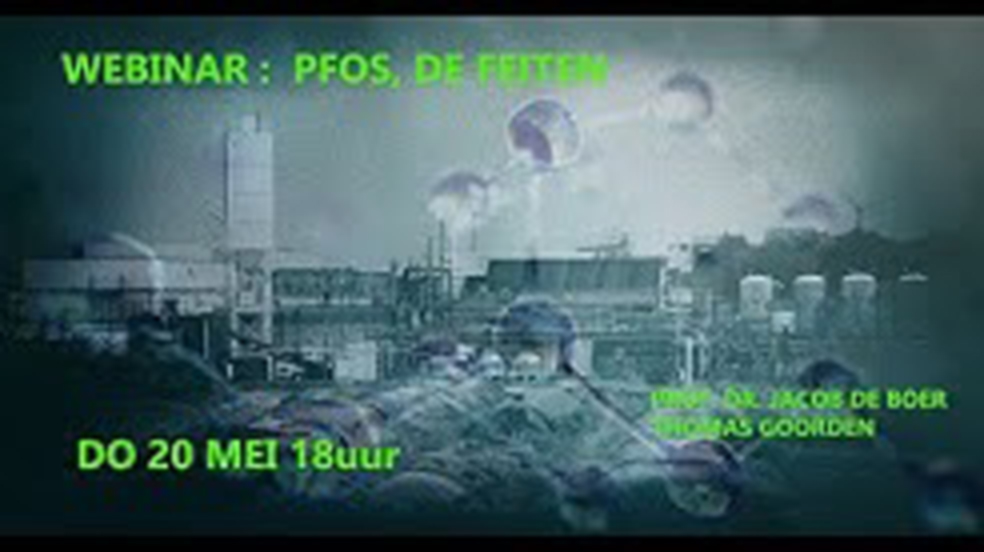05.01.2022 | Fundamental right
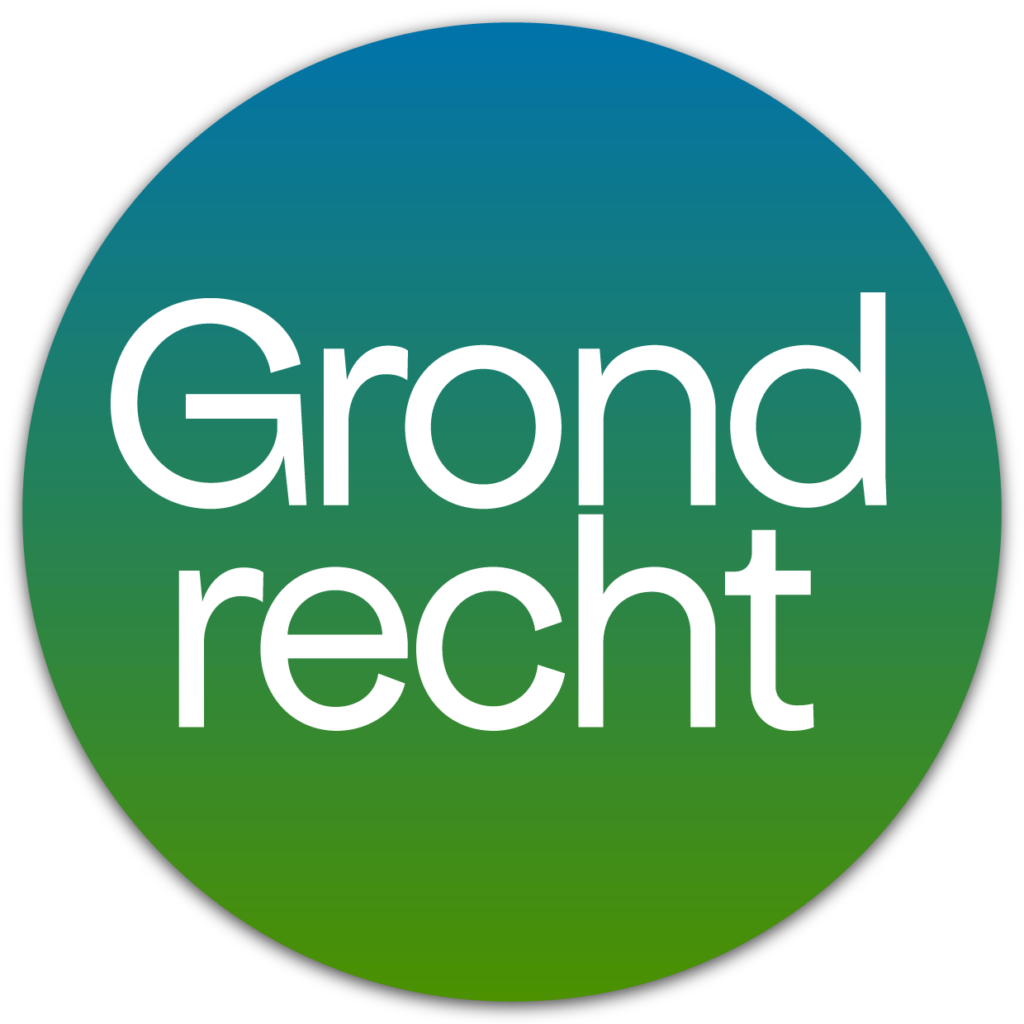
Manual + objection letter
Environmental permit Lot0_OMV OWV ST_Amendment VW_MIL – OMV 2021160014 – BAM/Lantis
Thank you for your commitment to submitting the objection below.
Please follow the steps below:
STEP 1. GO TO THE ENVIRONMENTAL DESK.
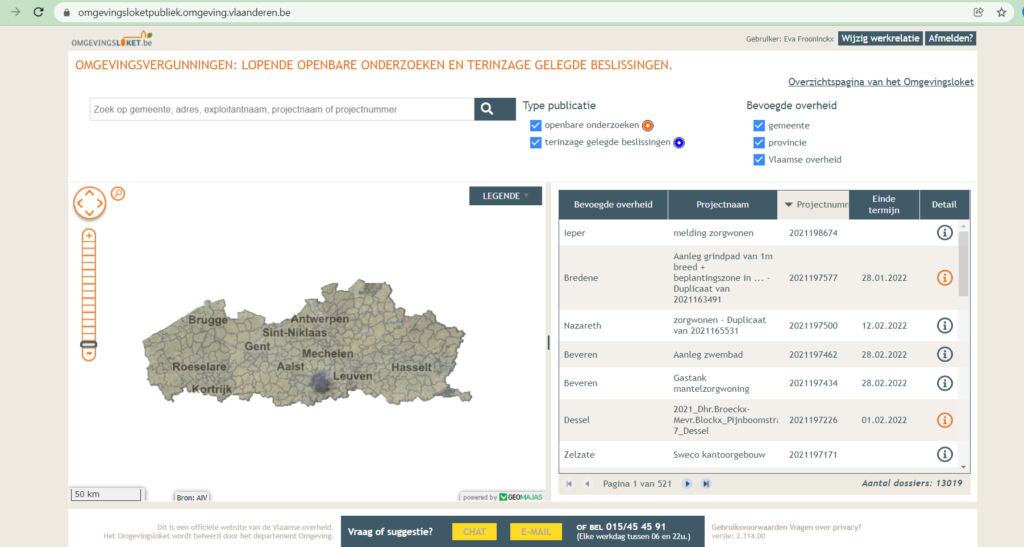
STEP 2. SEARCH FOR
- Enter the project code “ in the search box at the top left2021160014” in
- select “Lot0_OMV OWV ST_Change VW_MIL (2021160014)” from the popup list below the search box
the project now appears in the list on the right side
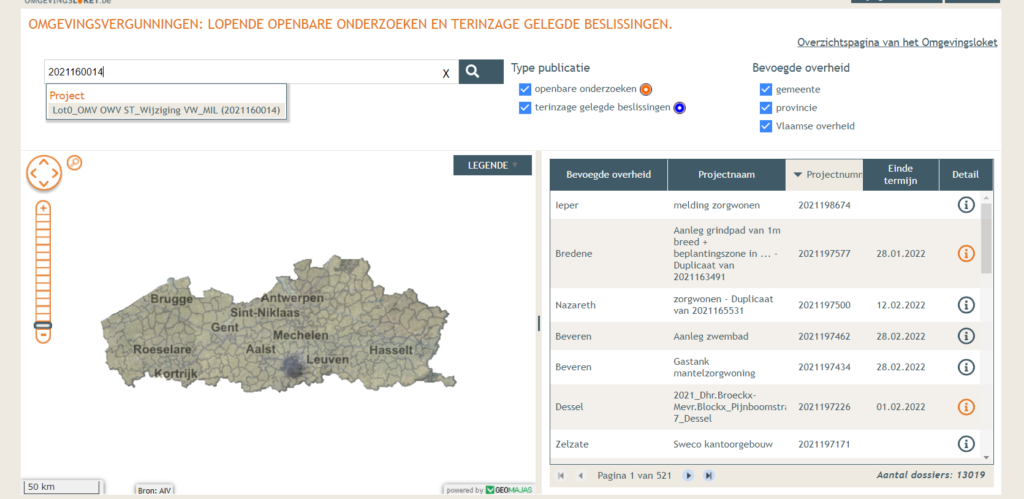
2.
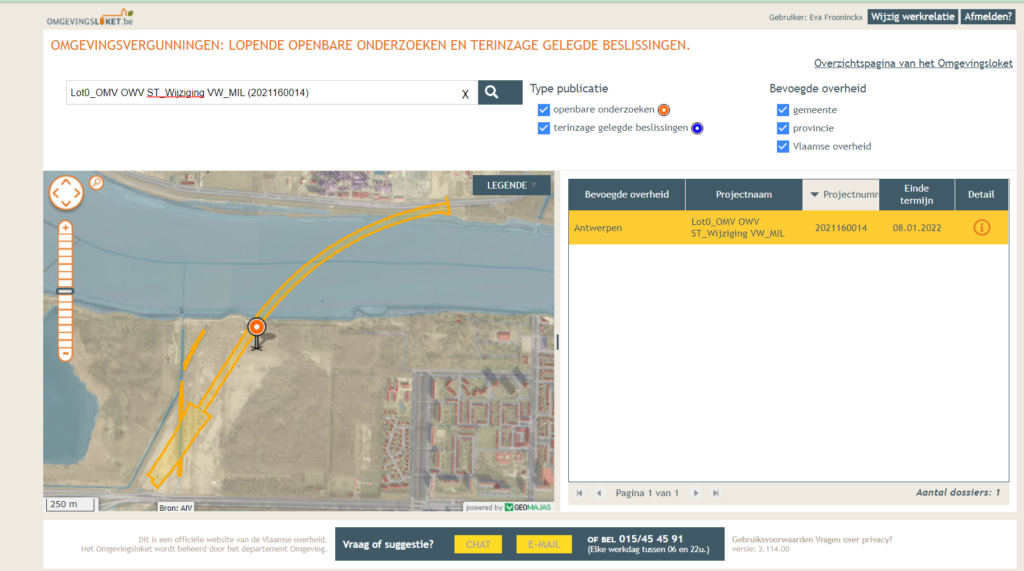
STEP 3. SELECT THE PROJECT.
Click on the 'information button' behind the project in the box on the right.
Project number: 2021160014
Click on the  behind the project.
behind the project.
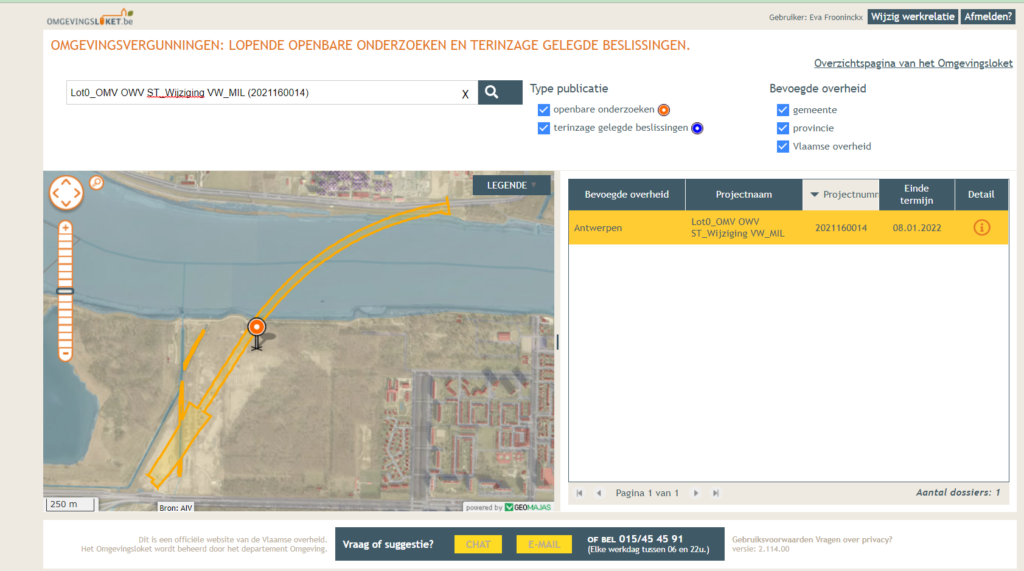
All details and documents of this project will appear:
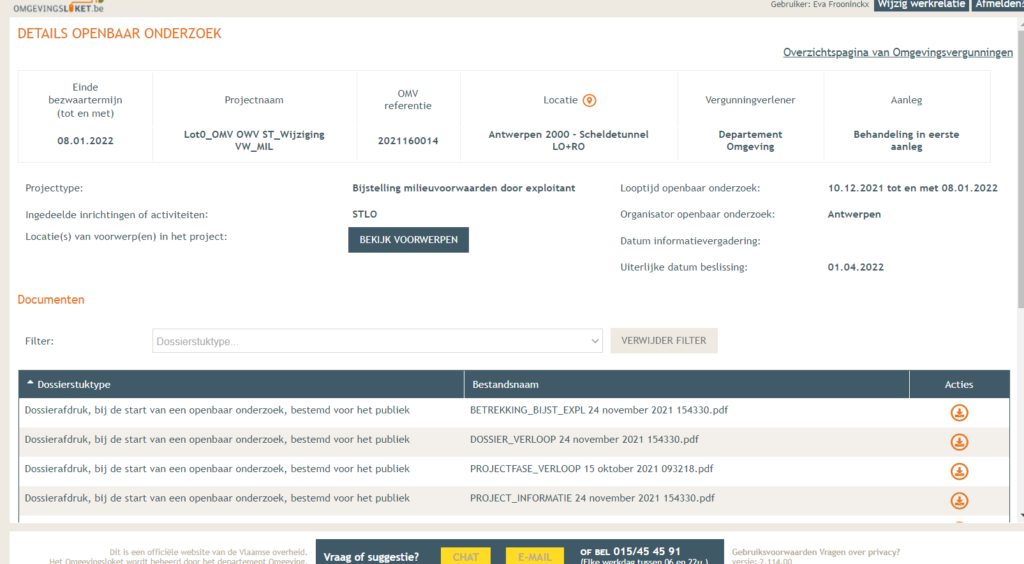
STEP 4. CLICK ON 'ADD NEW OBJECTION'
Click on 'ADD NEW OBJECTION' in the blue bar at the bottom.

STEP 5. SIGN UP / LOG IN
Log in with Itsme, an eID card reader or another method.
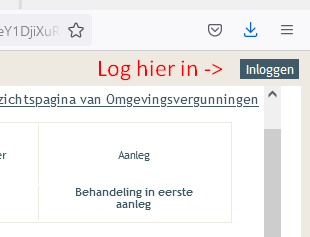

STEP 6. FILL IN THE FORM.
- enter your email address
- select what applies under “Representation”
- choose whether you want your objection to be visible to others > if so, check this box
- enter your objection in the large box and/or attach a file
- On the following pages of this manual you will find an example that you can copy
- Fill in your name and address in the yellow marker on the example!
- click SUBMIT!
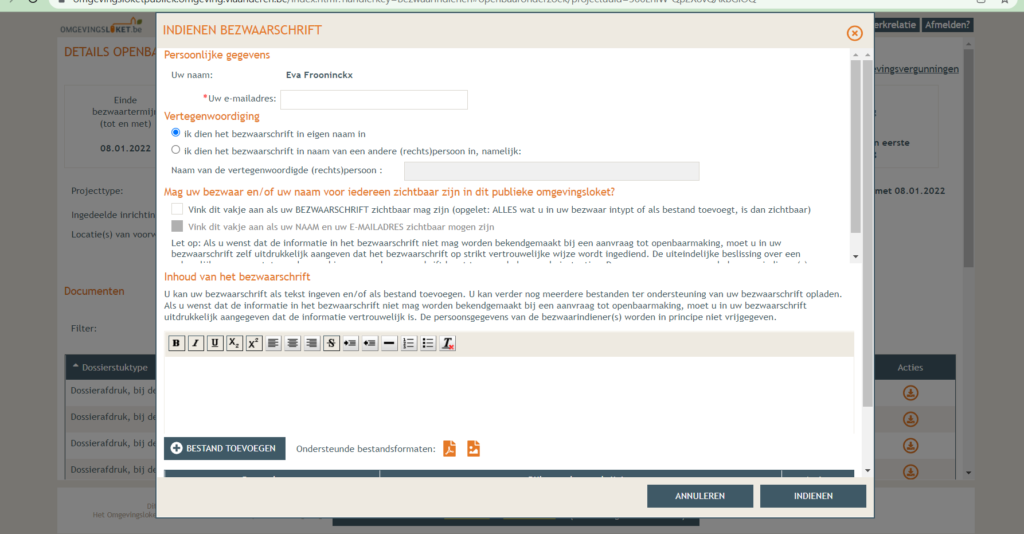
EXAMPLE Letter of Objection
Select the entire text and image below, copy and paste it into the “Contents of the appeal” field of your appeal.
Please note that after pasting the text you must enter your name and address (marked in yellow below) to personalize.
Of course you can also add your own comments.
copy from here
By:
[ENTER YOUR NAME HERE]
[FILL IN YOUR FULL ADDRESS HERE]
[ENTER YOUR PLACE OF RESIDENCE HERE]
—————————————————————————————————————————–
At:
Organizers of the public inquiry:
The College of Mayor and Aldermen of the City of Antwerp
Attn: Permits Department, Grote Markt 1, 2000 Antwerp.
Permitting authority:
The Department of Environment of the Flemish Government
Department of Area Development, Environmental Planning and Projects
Directorate of Area Development
Team Mer
King Albert II Avenue 20 box 8, 1000 Brussels
mailto:mer@vlaanderen.be
—————————————————————————————————————————–
OBJECTION
————————————————————————————————————–
Against an environmental permit, adjustment of environmental conditions by the operator for the Left Bank and Right Bank construction zone with project name 'Lot0_OMV OWV ST_Wijziging VW_MIL', on the Scheldt Tunnel RO + LO, Antwerp.
Permit applicant: Management Company Antwerp Mobile (BAM NV – public limited company under public law), Sint-Pietersvliet 7, 2000 Antwerp
Ref. OMV 2021160014
————————————————————————————————————–
Dear,
With this message I formally submit an objection in the context of the ongoing public inquiry into the application for an environmental permit 'Lot0_OMV OWV ST_Wijziging VW_MIL' (OMV reference 2021160014). This environmental permit includes adjustments to the following special conditions granted in the environmental permit with file number OMV/2020034861:
This environmental permit also includes ADDITIONAL conditions:
– BAM NV requests the following additional condition:
“The PFAS groundwater and surface water monitoring plan ILO and ST, with reference number OWVA-00000_LANPPL- W21-000001, is being implemented to monitor the long-term effect of the works on the groundwater and surface water quality and the standstill principle in the zones where free use as construction soil is permitted. The measurement results are always provided after analysis, as soon as available, for evaluation to OVAM (for groundwater) and VMM (for surface water) and for information to AHH and aGOP. Adjustments to this monitoring plan can only be made after consultation with the Enforcement Department and OVAM (regarding groundwater) and VMM (regarding
surface water).
The image below, based on research conducted by the permit applicant itself, shows that the project area to which the permit application applies falls within a zone that is heavily polluted with PFAS, including PFOS. By means of this letter, I object to the granting of a permit for ' Lot0_OMV OWV ST_Wijziging VW_MIL ' (OMV reference 2021160014)', as long as the impact on the environment, including Habitats Directive areas and Birds Directive areas, the population and human health is not investigated as required by the applicable legislation on environmental impact assessment. In addition, this permit application must be evaluated in the light of the judgment of the Council of State of 29 December 2021 (no. 252.567 of 29 December 2021 in case A. 235.240/VII-41.264).
- A sufficient project EIA was never drawn up for the basic permit
First of all, it should be noted that for the basic permits for which the current environmental permit application constitutes a partial amendment, environmental impact assessments in accordance with the applicable legislation were never conducted. For example, the impact on the environment of earthmoving works in areas contaminated with PFAS was never (adequately) investigated. This was confirmed during the hearings of the Parliamentary Inquiry Committee PFAS-PFOS, including on 27 August (by Isabelle Larmuseau, KU Leuven).
In view of this PFAS contamination, no adequate water and soil test was carried out for this and other permits; nor was the impact of the planned earthmoving on the groundwater adequately studied; nor was the impact of the works on nearby protected nature reserves investigated.
Consequently, reference cannot be made to the basic permit to argue that the environmental impact of the works for which a permit is currently being requested should not be investigated.
- No adequate research into environmental impacts
The documents accompanying the current permit application also do not show that the possible effects of PFAS on the environment were investigated in a manner that is consistent with the applicable legislation on environmental impact assessment.
After all, there was still no adequate water and soil test; nor was the impact of earthmoving mentioned in the permit application on the groundwater adequately studied; nor was the impact on nearby protected nature areas (Habitat Directive areas, Bird Directive areas) investigated.
It is also important that it has recently emerged that (permitted or unpermitted) discharges from 3M Belgium contain, in addition to PFOS, other toxic PFAS compounds (PFOA, FBSA, PFBSA, MeFBSA, MeFBSAA). Consequently, the effect of the works to which the application relates must also be investigated, given the possible presence of these substances in the project area.
It is important to note that VMM recently measured an excess of PFBA in the air 100 metres from the Sint-Anna beach. Remarkably high concentrations of PFBA were measured in the months of August, September and October. From the Apache article dated 27/12/2021: “The researchers investigated at nine measuring points in the wider area around 3M how much PFAS is deposited on the soil via air deposition. At the measuring point on the Wandeldijk on the Left Bank, next to the Sint-Anna beach, an average of 213.7 nanograms of PFBA (ng/m²/day) was measured daily per square metre. For comparison: the amount of deposited PFOS measured at the same location, responsible for the historical pollution of the area around 3M, was 2.4 ng/m²/day in the same period. The difference is very large at the Sint-Anna beach. At other locations, the differences between PFBA and PFOS are less significant, but PFBA is still present in significantly higher doses than PFOS almost everywhere. The results of all measuring points added together, PFBA accounts for 55% of the measured precipitated PFAS. For PFOS, this is 13%.”
Since no adequate research has been carried out into the environmental impact of the planned works, a permit cannot be granted.
- Extent of PFAS pollution unprecedented
There is no detailed data available on PFAS pollution in the area to which the permit application relates. As a result, it seems difficult or impossible to assess the effects of the works on the environment and public health. For example, it will be difficult to determine whether the standstill principle is being respected.
This lack of information also makes it impossible for the advisory and licensing authorities to make a sufficient assessment of the environmental impact of the works (in an area polluted with PFAS) for which a permit is requested. Additional research is therefore required before a permit can be granted.
- The application does not take into account the most recent insights and standards regarding PFAS
In view of the EFSA 2020 standards, it also appears that the standard framework used is outdated. In September 2020, EFSA reduced the European reference dose to 0.63 ng/kg bw/day for the sum of PFOS+PFOA+PFHxS+PFNA. This implies that the current soil standard of 70 µg/kg ds is based on a cumulative underestimation of the toxicity of PFOS by a minimum factor of 1,020x (4,500 ng/L versus 4.41 ng/L). The standard used is in stark contrast to standard frameworks used elsewhere, where similar pollution problems occur. For example, with regard to the pollution in Dordrecht (PFAS pollution by Chemours), the rule is applied not to excavate soil above 3 micrograms/kg ds.
On Thursday 16/12/2021, the Antwerp Court of First Instance declared admissible an environmental injunction action that questions the framework of standards used, because it is not based on the most recent scientific insights.
Given the environmental duty of care, which obliges the permit applicant to take all measures to prevent damage and nuisance, the permit application should in principle be assessed on the basis of the most recent insights. In this case, this was not done; consequently, no permit can be granted.
- Remediation and/or waste disposal obligation
In any event, the advisory or licensing authorities must investigate whether there is no obligation to remediate or dispose of waste in relation to the PFOS contamination in the area to which the permit application relates.
As confirmed by the Council for Permit Disputes (14 January 2021), remediation of a project area may be required before work can commence in a contaminated area.
In addition, it must be examined whether, in view of the provisions on environmental criminal law, the waste disposal obligation must not be fulfilled before the works are started. This has not happened in the present case either.
- Judgment of the Council of State (no. 252.567 of 29 December 2021 in case A. 235.240/VII-41.264)
The Council of State ordered the suspension of the execution, in case of extreme urgency, of the declaration of conformity by the non-profit organisation Grondbank with no. 2015-16-210737 of 3 December 2021 of the update of the Technical Report on infrastructure works on the Left Bank dated 19/12/2019, with reference OWL1-SBSRTS-RAP-0001; the declaration of conformity by the non-profit organisation Grondbank with no. 2046-19-305809 of 3 December 2021 of the update of the Technical Report on the Scheldt Tunnel and Linkeroever connection dated 21/11/2020, with reference OWVA-SBS-BAM-RAP-0027.
She bases the above decision on the fact that the earthmoving works are not in accordance with the earthmoving regulations.
The Council of State decided that the work zone for the Oosterweel works was not correctly demarcated. According to the court, the area of the works – which extends over several kilometres from the 3M site in Zwijndrecht to Antwerp-Linkeroever and the Scheldt – does not form a single work zone, but a set of three separate construction projects, each of which has been permitted in a different way. This earth movement on the work zone cannot be legally valid. This was also confirmed in the press by client Lantis on 30/12/2021.
During the hearing, the Auditor at the Council of State was also particularly critical of the approach at the Oosterweel site. The auditor stated that the soil excavated by BAM should be qualified as waste, as stipulated in the materials decree. This waste may not simply be dumped in a so-called 'safety berm' on the 3M site. According to the Auditor, internal BAM documents show that the qualification as a 'safety berm' is merely a pretext. This term was explicitly created in the settlement between 3M and Lantis, in order to prevent the soil storage from having to be licensed as a landfill.
The suspension of the declaration of conformity of the Technical Reports for the Oosterweel works by the Council of State obviously also has consequences for this permit application. First of all, the permit application states that various recommendations of the Earthmoving Commission (led by Mr. Vrancken) were incorporated in the new technical reports. However, the declaration of conformity of these Technical Reports was suspended by the Council of State.
Since both illegalities have not been remedied in the current state of the permit procedure, the permit cannot be granted.
- European directives POP regulation
It should also be noted that a European regulation on so-called persistent organic pollutants (POPs), which also includes PFAS-like chemicals, has been in force since 2019. This POP regulation clearly stipulates that there is a ban on the application or reuse of soil contaminated with PFOS.* In addition, violations are subject to severe criminal sanctions.**
Currently, a question concerning the interpretation of the POP Regulation is pending with the European Commission. It seems appropriate to wait with granting a permit until an answer to that question has been received. Only if the answer confirms the approach proposed in the permit application, a permit can be granted.
- Monitoring plan provides no guarantees for the safety of local residents
The current permit application also refers to 'Appendix 1 Monitoring plan PFAS soil and surface water ILO and ST_V2'.
There are no approved Technical Reports, which are nevertheless referred to under title 3.2, which means that the monitoring plan referred to above is neither complete nor correct.
Furthermore, the description of where the PFAS-containing soils will be applied is very brief; it is even admitted that there is currently no insight into the exact locations where the different qualities of soils will end up. See also title 3.2. It can be clearly deduced from this that the monitoring plan cannot be sufficiently fine-tuned, and consequently this monitoring plan can in no way provide guarantees that there will be no impact on the environment, groundwater and surface water.
Under title 3.2 it is stated that the works would improve exposure to the pollution. However, no scientific substantiation is given for this. Furthermore, various parameters are not taken into account:
- the blowing up of dust during the works can have an impact on the fauna and flora in the area, as well as on local residents
- no monitoring is done during the works, as a result of which it is not possible to follow up the impact of the works on the environment, the groundwater and the surface water. The monitoring campaign will only start when the verge is finished, see title 3.5.2.
- The zero situation can no longer be recorded in many places, because some works have already been completed or are in full swing. See title 3.4. This means that it is already too late to start measuring the zero situation in many places.
- The monitoring does not provide any proposals for possible solutions if a problem were to occur in the future. Problems could be that there would still be increased contamination of surface or groundwater. It is stated that further investigation is then required into the severity and the source, but no ways are provided to solve this. In other words, monitoring is a way of following up, but does not provide a solution if problems occur, so it does not provide any guarantees that the works would be safe or healthy for the environment and the residents.
Title 3.8 states that it is expected that an improvement in groundwater quality may be expected. However, no scientific substantiation is given for this.
See accompanying passages:
Title 2 – Earthmoving
Title 3.4 - Recording the baseline situation
General decision:
Based on the objections described under Titles 1 to 8, it must be concluded that in the current state of the application, insufficient research has been conducted into the effects that can be expected on local residents and the environment if a permit is granted.
For example, no adequate EIA was conducted for these works; nor was the impact of earthmoving on the groundwater adequately studied; nor was the impact of the works adequately investigated on nearby protected nature areas (Habitat Directive areas, Bird Directive areas) and on the population and human health. For example, the biomonitoring plan does not provide sufficient guarantees for the health and safety of local residents.
Due to the ruling of the Council of State dated 29/12/2021, no earthmoving is possible within the cadastral work zone because the declarations of conformity for the infrastructure works LO and Schelde were suspended. There are therefore no valid Technical Reports available, which means that excavation of soil and earthmoving is not possible. The legality objections raised by the Council of State and its Auditor must be resolved before a permit can be granted.
Finally, a question is pending with the European Commission on the interpretation of the POP Regulation; it is appropriate to await a response in that procedure before granting a permit.
Consequently, for all the above arguments, it is appropriate not to grant the permit at this time.
* REGULATION (EU) 2019/1021 OF THE EUROPEAN PARLIAMENT AND OF THE COUNCIL of 20 June 2019 on persistent organic pollutants.
** https://www.tijd.be/politico-economie/belgie/vlaanderen/het-europese-zw-van-damocles- Boven-oosterweel/10356595.html.



